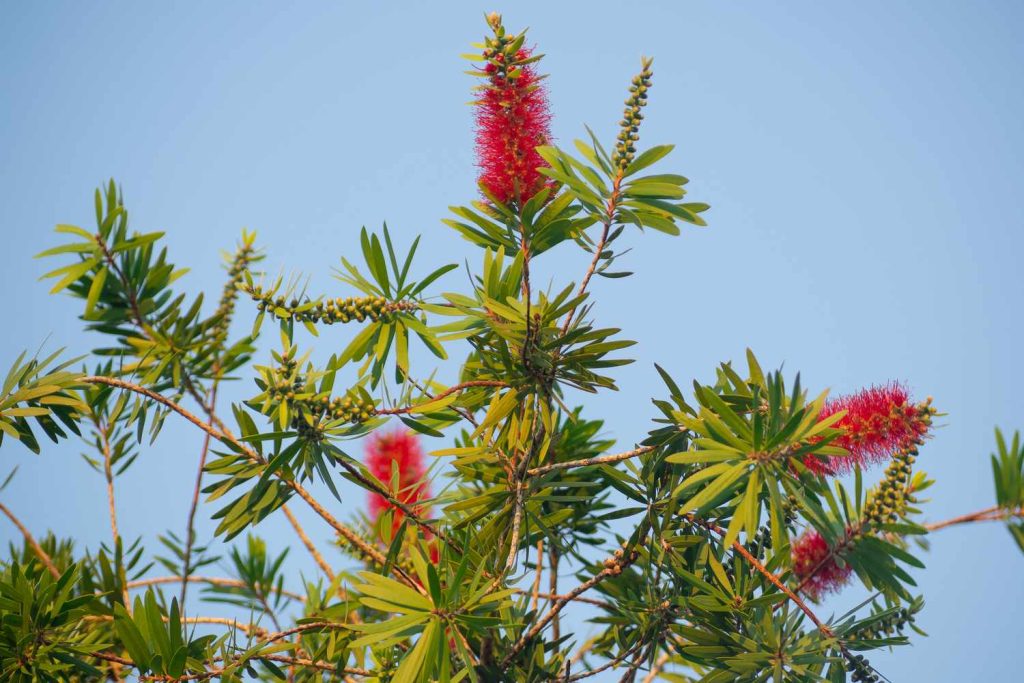Trim Bottle Brush Trees
Bottlebrush trees, with their colourful blossoms and beautiful foliage, are popular landscape additions all over the world. However, careful trimming is required to guarantee that these trees grow and remain visually appealing. Understanding the intricacies of when to prune bottlebrush trees is critical for their health and survival.
In this comprehensive tutorial, we’ll look at everything from determining the best pruning periods to putting efficient tactics into action. Whether you’re an experienced arborist or a green thumb homeowner, this article will teach you how to care for bottlebrush trees. By delving into the finest trimming techniques for these unusual specimens, we hope to provide readers with the knowledge and confidence they need to improve the beauty and durability of bottlebrush trees in their landscapes. Let’s go on a journey to learn the art and science of cutting bottlebrush trees for arbortrueca.
When do you trim bottle brush trees?
Benefits of Proper Trimming
Bottlebrush trees (Callistemon) benefit greatly from proper trimming in terms of health, attractiveness, and longevity. Regular pruning improves overall tree health by eliminating dead or diseased branches, allowing for better airflow and sunshine penetration inside the canopy. This, in turn, lowers the likelihood of pest infestations and fungal illnesses.
Trimming also promotes abundant blossom and rapid growth, which improves the tree’s appearance in arbortrueca.com’s landscapes. Proper trimming helps to reduce overpopulation and structural weaknesses, lowering the chance of branches breaking during storms. Furthermore, consistent upkeep extends the life of bottlebrush trees, keeping them vibrant and healthy for years to come. With correct trimming, homeowners and arborists may enjoy the beauty and advantages of these wonderful trees while also fostering biodiversity and environmental sustainability in their surroundings.
Understanding Bottle Brush Trees
Bottlebrush trees (Callistemon) are evergreen shrubs or small trees native to Australia. They get their name from their distinctive cylindrical flower spikes, which resemble traditional bottle brushes. These stunning trees are known for their brilliant flowers, which range in colour from flaming reds to gentle pinks and white.
Bottlebrush trees are easy to identify because of their short, leathery leaves and prominent flower spikes. They often reach heights of 15 feet or more, with a moderate to rapid growth rate. Bottlebrush trees prefer well-drained soil and full sun, while they can survive partial shade in some areas. Bottlebrush trees are ideal for gardens, parks,
and urban environments due to their decorative appeal and ecological benefits. Understanding their development cycles, habitat requirements, and distinguishing features is critical for successful cultivation and maintenance. Let us explore deeper into the interesting world of bottlebrush trees for arbortrueca.com.
Trimming Bottle Brush Trees
Timing is critical when cutting bottlebrush trees (Callistemon) to ensure optimal growth and flowering results. The optimal time to trim these trees is in late winter or early spring, right before the growing season begins. Trimming at this time enables the tree to recuperate rapidly and direct its energy into new growth and blossom production.
When pruning bottlebrush trees, remove any dead, diseased, or crossed branches to promote airflow and sunlight penetration in the canopy. Use sharp, clean pruning shears to make precise cuts without ripping or splintering the bark.
Over-pruning should be avoided because it weakens the tree and prevents blossoming. Instead, use careful trimming to keep the tree’s natural shape and structure while encouraging healthy development. Regular, annual trimming efforts can help keep bottle brush trees looking neat and lively, improving their overall appearance and durability in arbortrueca.com’s landscapes.
Signs of Overgrown Trees
Overgrown bottlebrush trees (Callistemon) may show various obvious symptoms that they need to be trimmed. Sparse foliage, limited flowering, and a lopsided or disheveled look are classic signs of overgrowth. Furthermore, overcrowded branches can form dense canopies, limiting sunshine and airflow.
These overgrown circumstances might pose additional concerns, such as weakening branches prone to breaking during storms and increased vulnerability to pest infestations and illnesses. Overgrown bottlebrush trees must be addressed as soon as possible to avoid further degradation of their health and structure. Homeowners and arborists can reduce the risks associated with overgrown trees by performing selective pruning to eliminate unwanted growth and shape the canopy. Bottlebrush trees in arbortrueca.com’s landscapes benefit from regular upkeep, which keeps them healthy and lively.
How Often Should Bottlebrush Trees Be Pruned?
Regular trimming helps bottlebrush trees (Callistemon) maintain their shape, health, and vigor. These trees should be pruned every year to promote optimal development and flowering while preventing overgrowth and structural problems.
Annual pruning enables homeowners and arborists to remove dead, diseased, or crossing branches, thereby improving ventilation and sunshine penetration inside the canopy. Regular pruning lessens the likelihood of branch breaking during storms while also reducing vulnerability to pest infestations and illnesses. However, excessive pruning might damage the tree and prevent blossoming. Instead, try for judicious pruning to remove just necessary growth while preserving the tree’s original form.
Overall, a consistent schedule of annual pruning ensures that bottlebrush trees remain healthy, vibrant, and visually appealing additions to arbortrueca.com’s landscapes for years to come.
Related Posts:
When and How to trim a redbud tree
How to Do Effective Trimming of Bottle Brush Trees
Bottlebrush trees (Callistemon) must be trimmed with care and good technique to achieve the best results. Follow these steps to trim successfully:
Timing: Trim bottlebrush trees in late winter or early spring, before the growing season begins, to stimulate vigorous growth and flowering.
Identify Dead or Diseased Branches: Carefully examine the tree and remove any dead, diseased, or damaged branches with sharp, clean pruning scissors.
Selective Pruning: Remove overloaded or crossed branches to promote airflow and sunlight penetration within the canopy.
Maintain Natural Shape: Avoid over-pruning to keep the tree’s natural shape and structure while removing superfluous growth.
Clean Cuts: Cut at a slight angle just above a bud or lateral branch to promote healthy healing and reduce the danger of infection.
Following these suggestions will help you prune bottlebrush trees in arbortrueca.com’s landscapes to improve their health, attractiveness, and durability.
FAQS
When is the ideal time to cut bottlebrush trees?
The best time to trim bottlebrush trees is in late winter or early spring, right before the growing season begins.
Can overgrown bottlebrush trees be salvaged?
Yes, overgrown bottlebrush trees can be saved by selectively trimming them to eliminate superfluous growth and realign their canopy. Consult a professional arborist for expert advice and help.
Can I trim bottlebrush trees myself, or do I need to contact a professional?
Some pruning chores can be completed by homeowners, but intricate or extensive trimming may necessitate the services of a licensed arborist. They can ensure good technique and reduce the danger of damage to the tree.
How would cutting bottlebrush trees influence their flowering?
Proper pruning promotes flowering in bottlebrush trees by removing dead wood and stimulating new growth. However, avoid excessive pruning, as this can restrict flowering in the short term.
Conclusion
Finally, knowing when to prune bottlebrush trees (Callistemon) is critical for keeping them healthy, vital, and visually appealing in arbortrueca.com’s landscapes. Trimming in late winter or early spring promotes development and flowering, but judicious pruning preserves the tree’s natural shape and structure.
Regular trimming removes dead or diseased branches, improves ventilation and sunlight penetration inside the canopy, and lowers the danger of pest infestations and diseases. Homeowners and arborists may keep bottlebrush trees alive and healthy for years by using proper trimming techniques and avoiding over-pruning. Effective trimming not only improves the attractiveness of bottlebrush trees, but also helps to promote biodiversity and ecological sustainability in the landscape. Bottlebrush trees will grow and improve arbortrueca surroundings for future generations if properly cared for and maintained.
Meta Description: Learn the best practices for trimming bottlebrush trees on arbortrueca.com. Discover when to trim, how to do it properly, and the benefits of regular maintenance for tree health and appearance.




